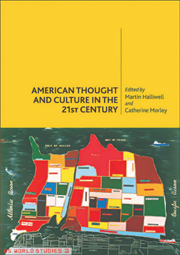Book contents
- Frontmatter
- Contents
- Acknowledgements
- Notes on the Contributors
- Introduction: The Next American Century?
- PART 1 POLITICS
- PART 2 SOCIETY
- 7 Contemporary Social Criticism
- 8 Religion in Post-Secular America
- 9 The US and Globalisation
- 10 The Future of Medicine
- 11 Technology in the 21st Century
- 12 America and the Environment
- PART 3 CULTURE
- Bibliography
- Index
9 - The US and Globalisation
from PART 2 - SOCIETY
Published online by Cambridge University Press: 05 August 2013
- Frontmatter
- Contents
- Acknowledgements
- Notes on the Contributors
- Introduction: The Next American Century?
- PART 1 POLITICS
- PART 2 SOCIETY
- 7 Contemporary Social Criticism
- 8 Religion in Post-Secular America
- 9 The US and Globalisation
- 10 The Future of Medicine
- 11 Technology in the 21st Century
- 12 America and the Environment
- PART 3 CULTURE
- Bibliography
- Index
Summary
The theme is centuries old and it has risen to consciousness at several points over the course of US history, but the precise term ‘globalisation’ crystallised at the centre of American consciousness in the mid-1990s. Globalisation concentrated the elements of a discourse that had been thickening since the late 1970s, forming those elements into a kind of master concept that has now largely supplanted such predecessors as ‘post-industrial society’ or ‘postmodernism’. The claims adhering to the term are diverse, and even the simplest definition is bound to be very partial; basically, it asserts that the bonds of world connection have grown dramatically in range and depth over recent decades and that all societies are now, to a large extent, shaped by their embeddedness in a global context. The events begun on 11 September 2001 brought about a brief pause in globalisation talk, for it was hard to say whether terror and war ruptured the drift toward world connection or demonstrated the extent of global reach in startlingly perverse ways. Soon, however, the discourse of globalisation picked up again, and it has continued to yield a mounting body of books and articles throughout the first decade of the new century.
- Type
- Chapter
- Information
- American Thought and Culture in the 21st Century , pp. 145 - 160Publisher: Edinburgh University PressPrint publication year: 2008



